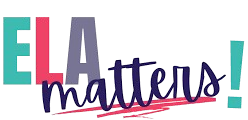When I first started teaching AP Capstone we did an exercise with the book Zoom by Istvan Banyai. It is a picture book without words that tells the story of perspective. The basic question that it asks is: what would the world look like from outer space with an amazing zoom function? It is an activity that I have used from 9th grade to 12th grade, in student council meetings, the English classroom (of all levels), and even at summer camp!
This book is a great tool to use at the beginning of the school year for team building, communication skills, and class bonding. I just used it this week to help a group of teen boys at summer camp work on communication.
Setting Norms
The first step when using this book is to create (or review) class norms. In my classroom, we set classroom norms instead of classroom rules. We set the tone that our classroom is a community that works together and respects each other. These norms are unique to the teacher and the cohort of students. Here are a few I always like to include:
- one person talks at a time
- no one is talking when directions are given
- bathroom use/water fountain procedures etc.
- expect and accept unfinished bussiness
Putting the Norms into Practice
There are a number of activities that you can run using this book. Here are a few ideas to start you off:
Activity #1: Blind Ordering
The Goal: Have students put the pages of the book in order
Skills: Discussion, description, word choice, perspective, team building
Procedure: Each student is given a page of the book and are instructed to show no one what is on their page. Then, the group is given the goal to put the book back in order based on verbal descriptions only. This is a great activity to do outside to give them space to get into order. This also can take some time to get started because some of the pages are so different, but as students hear others giving clues, they will start to gravitate towards those who connect to what is on their own page.
Activity #2: Write the Story
The Goal: Together, write a comprehensive story for sections of the book in small groups
Skills: writing, description, context clues, team building
Procedure: After getting the book pages in order, take time in class to write the story of the book. The beauty of no words in the story is that it is 100% up for interpretation. You could chunk the book and have them write short stories in small groups or work together as a class to write a story for the whole book. This would be a great introduction/review to plot structure and sequencing of ideas. If you do it in small groups, you could see how much the stories do or do not align for a good laugh once put all together.
Up Next
I highly recommend debriefing after doing any of these activities to help you and the students reflect on the positives and negatives of interactions together and to set goals for how they would like to grow as time goes on. I usually have students write a reflection about what they noticed as they completed the activity, what they learned, and what they wished had gone better before sharing out as a whole group. When I ran this activity at summer camp this week, I also asked them to come up with one skill from the activity they could apply outside of camp. It brought forward many interesting responses!
There is a SECOND book – ReZoom – that would be fun to add in a few months after you do the first Zoom book and time to see if students could do it quicker and with more accuracy. This is also a great way to regroup at the beginning of a new quarter, semester, or after a break to look at growth and review class norms.

